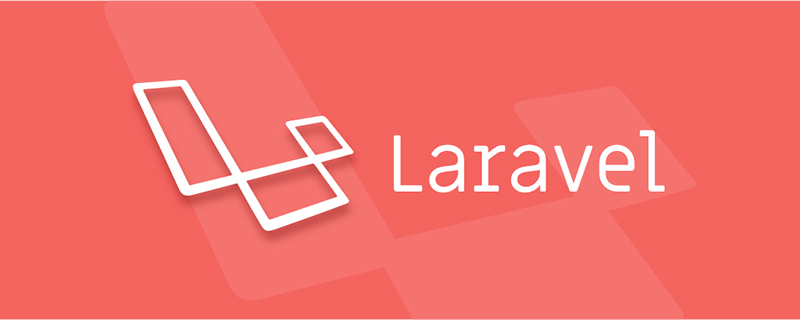최근 Laravel Brasil 커뮤니티에서 보기보다 더 흥미로운 질문을 보았습니다. 다음과 같이 구현된 UsersResource가 있다고 가정해 보세요. UsersResource 用下面的实现:
<?php
namespace App\Http\Resources;
use Illuminate\Http\Resources\Json\Resource;
class UsersResource extends Resource
{
/**
* Transform the resource into an array.
*
* @param \Illuminate\Http\Request
* @return array
*/
public function toArray($request)
{
return [
'id' => $this->id,
'name' => $this->name,
'email' => $this->email
];
}
}出于某种原因,您可能希望在另一个端点上重新使用该资源类,但隐藏email 字段。这篇文章就是告诉你如何实现这一点的。
如果你不知道 API Resources 是什么,请查看我之前关于这个的文章。
- First Impression on API Resources
- API Resources with Nested Relationship
1- 初始化项目
有趣的东西从第3节开始.
composer create-project --prefer-dist laravel/laravel api-fields cd api-fields touch database/database.sqlite
编辑.env文件,删除数据库设置并使用 SQLite
DB_CONNECTION=sqlite
继续设置项目
php artisan migrate php artisan make:resource UsersResource php artisan make:resource --collection UsersResourceCollection php artisan make:controller UsersController php artisan tinker factory(App\User::class)->times(20)->create(); quit
2- 路由
确保在 api.php 文件中创建一个路由。
Route::apiResource('/users', 'UsersController');3- 控制器
控制器代表了期望的目标。在这个例子中,让我们假设在用户列表中,我们只想要所有用户的名字,而在用户显示中,我们只想隐藏电子邮件地址。
<?php
namespace App\Http\Controllers;
use App\Http\Resources\UsersResource;
use App\User;
class UsersController extends Controller
{
/**
* Display a listing of the resource.
*
* @param User $user
* @return \Illuminate\Http\Response
*/
public function index(User $user)
{
return UsersResource::collection($user->paginate())->hide(['id', 'email']);
}
/**
* Display a user.
*
* @param User $user
* @return \Illuminate\Http\Response
*/
public function show(User $user)
{
return UsersResource::make($user)->hide(['id']);
}
}为了达到这个目的,我们需要 UsersResourceCollection 和UsersResource 同时知道如何处理 hide 调用。
4- UsersResource 类
让我们从 show 方法开始. UsersResource::make 将会返回 UsersResource 的对象. 因此,我们应该揭开 hide 的神秘面纱,它可以存储我们期望从响应中移除的键.
<?php
namespace App\Http\Resources;
use Illuminate\Http\Resources\Json\Resource;
class UsersResource extends Resource
{
/**
* @var array
*/
protected $withoutFields = [];
/**
* Transform the resource into an array.
*
* @param \Illuminate\Http\Request
* @return array
*/
public function toArray($request)
{
return $this->filterFields([
'id' => $this->id,
'name' => $this->name,
'email' => $this->email
]);
}
/**
* Set the keys that are supposed to be filtered out.
*
* @param array $fields
* @return $this
*/
public function hide(array $fields)
{
$this->withoutFields = $fields;
return $this;
}
/**
* Remove the filtered keys.
*
* @param $array
* @return array
*/
protected function filterFields($array)
{
return collect($array)->forget($this->withoutFields)->toArray();
}
}大功告成! 现在我们可以访问 http://api.dev/api/users/1 ,你会发现响应中已经没有id 字段了。
{
"data": {
"name": "Mr. Frederik Morar",
"email": "darryl.wilkinson@example.org"
}
}5- UsersResourceCollection 类
执行项目集合中的 index 方法, 我们需要作出如下修改:
- (1) 确保
UsersResource::collection返回UsersResourceCollection实例 - (2) 在
UsersResourceCollection上公开hide方法 - (3) 将隐藏的字段传递给
UsersResource
关于 (1), 我们只需要重写 UsersResource 中的 collection 方法
<?php
namespace App\Http\Resources;
use Illuminate\Http\Resources\Json\Resource;
class UsersResource extends Resource
{
public static function collection($resource)
{
return tap(new UsersResourceCollection($resource), function ($collection) {
$collection->collects = __CLASS__;
});
}
/**
* @var array
*/
protected $withoutFields = [];
/**
* Transform the resource into an array.
* 将资源转换为一个数组
*
* @param \Illuminate\Http\Request
* @return array
*/
public function toArray($request)
{
return $this->filterFields([
'id' => $this->id,
'name' => $this->name,
'email' => $this->email
]);
}
/**
* Set the keys that are supposed to be filtered out.
* 设置需要隐藏过滤掉的键
*
* @param array $fields
* @return $this
*/
public function hide(array $fields)
{
$this->withoutFields = $fields;
return $this;
}
/**
* Remove the filtered keys.
* 删除隐藏的键
*
* @param $array
* @return array
*/
protected function filterFields($array)
{
return collect($array)->forget($this->withoutFields)->toArray();
}
}关于 (2) 和 (3) 我们需要修改 UsersResourceCollection 文件. 让我们公开 hide 方法并使用隐藏字段处理集合。.
<?php
namespace App\Http\Resources;
use Illuminate\Http\Resources\Json\ResourceCollection;
class UsersResourceCollection extends ResourceCollection
{
/**
* @var array
*/
protected $withoutFields = [];
/**
* Transform the resource collection into an array.
*
* @param \Illuminate\Http\Request
* @return array
*/
public function toArray($request)
{
return $this->processCollection($request);
}
public function hide(array $fields)
{
$this->withoutFields = $fields;
return $this;
}
/**
* Send fields to hide to UsersResource while processing the collection.
* 将隐藏字段通过 UsersResource 处理集合
*
* @param $request
* @return array
*/
protected function processCollection($request)
{
return $this->collection->map(function (UsersResource $resource) use ($request) {
return $resource->hide($this->withoutFields)->toArray($request);
})->all();
}
}就是这么简单! 现在我们访问 http://api.dev/api/users 看到返回结果中没有了 id 和 email 字段了如在 UsersController 中的指定方法 .
{
"data": [{
"name": "Mr. Frederik Morar"
}, {
"name": "Angel Daniel"
}, {
"name": "Brianne Mueller"
}],
"links": {
"first": "http://lab.php71/api-fields-2/public/api/users?page=1",
"last": "http://lab.php71/api-fields-2/public/api/users?page=7",
"prev": null,
"next": "http://lab.php71/api-fields-2/public/api/users?page=2"
},
"meta": {
"current_page": 1,
"from": 1,
"last_page": 7,
"path": "http://api-fields.lab.php71/api/users",
"per_page": 3,
"to": 3,
"total": 20
}
}6- 总结
本文目标是让Resource类通过隐藏一些在其他接口允许暴露的字段从而变得更加灵活。例如当我们请求/users接口时响应的数据是不包含avatar字段的,但是当请求/users/99时响应的数据里包含avatarrrreee
email 필드를 숨기고 싶을 수도 있습니다. 이 기사에서는 이를 달성하는 방법을 설명합니다. API 리소스가 무엇인지 모르신다면 이에 대한 이전 기사를 확인해 보세요.
- API 리소스에 대한 첫인상
- 중첩 관계가 있는 API 리소스



























